Picnic weather is upon us in the Northern Hemisphere. That means portable food that travels well, that is as good to look at as it is to eat, and that is as versatile as possible in terms of suiting diverse dietary needs. Have a gluten-free guest but want everyone else to enjoy the spread? Enter this seed-rich, gluten-free bread, a loaf whose recipe I have been tinkering with to hit that sweet spot of not-too-dense, not-too-low-in-profile, just-tall-enough, slices-perfectly, toasts-exceptionally, and actually-tastes-like-bread. It accommodates seasonally shifting flavors but can also be a steady workhorse without any esoteric variations.
This recipe for gluten-free bread bakes well as one large brick (it really is dense) or as three small, appetizer-friendly loaves.
Above: Seed-rich and dense, this gluten-free bread is highly nutritious and makes the best toast. Ever.
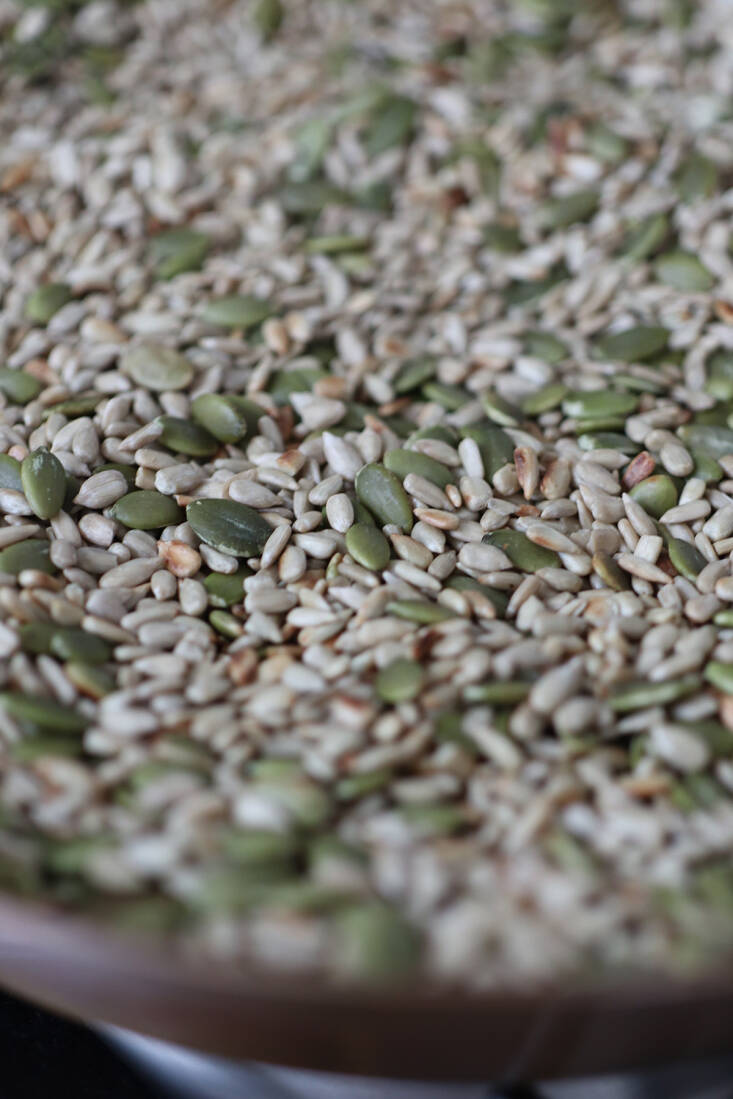 Above: Pan-toasting the seeds before baking the gluten-free bread accentuates their nuttiness.
Above: Pan-toasting the seeds before baking the gluten-free bread accentuates their nuttiness.
This flourless, gluten-free bread is dense and heavy (literally) with seeds. Its heft is made up of a mixture of sunflower seeds, supported by buckwheat and pepitas (pumpkin seeds). I also like to use sesame and poppy seeds, as well as wild seeds in season (lambs quarter, or Japanese knotweed). Other foraged flavors—like cattail pollen, ragweed flowers, and dried sweet clover—speak to its seasonal versatility. if there is a secret to its nutty goodness, it is toasting all the raw seeds in a skillet for a few minutes before the bread ingredients are mixed and baked. Toasting brings out their flavor.
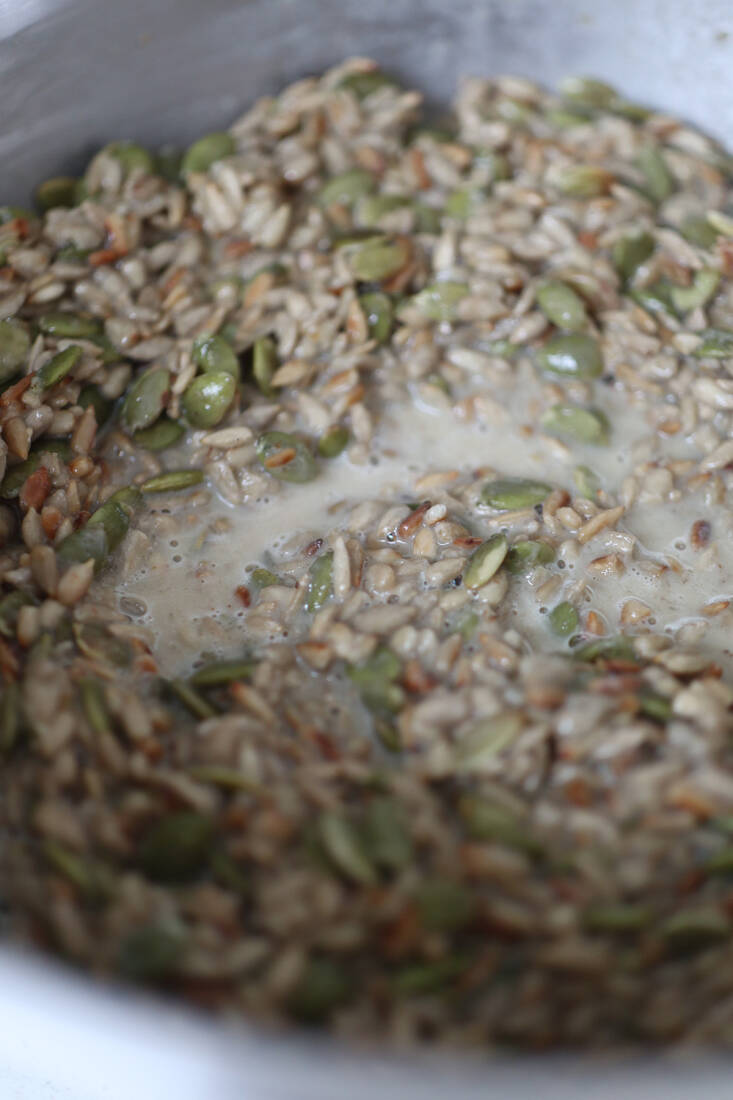 Above: The seeds are mixed with water, tahini, and psyllium.
Above: The seeds are mixed with water, tahini, and psyllium.
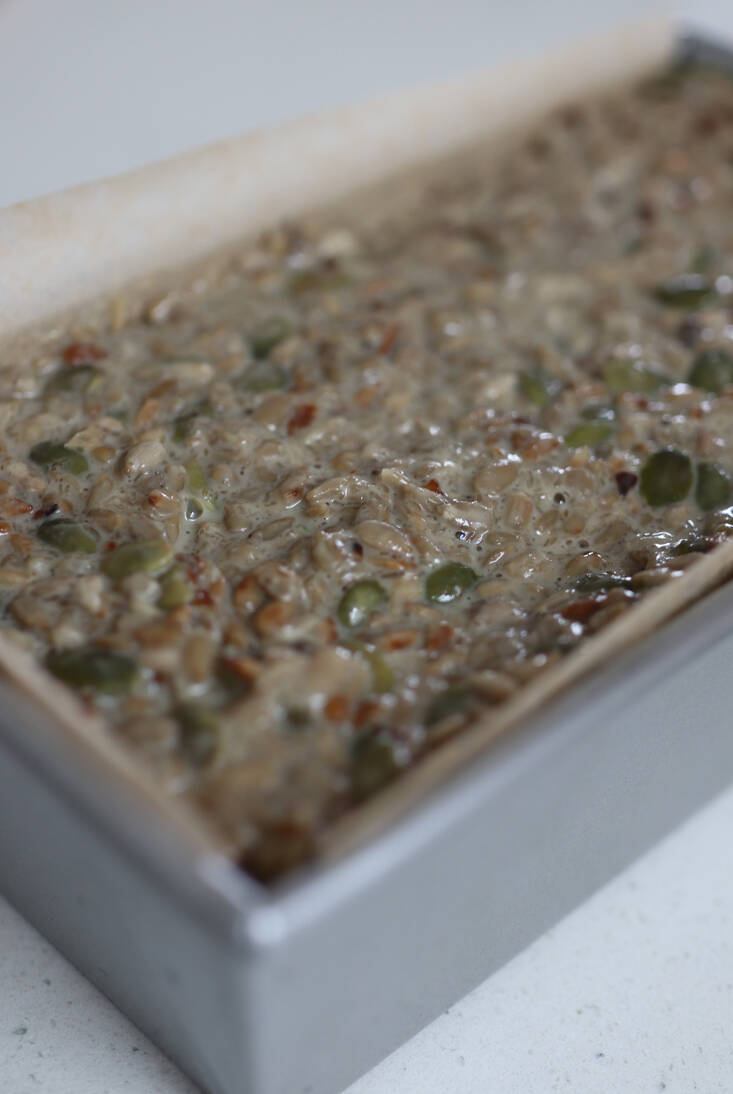 Above: The mixture is poured into a bread pan (it does not rise).
Above: The mixture is poured into a bread pan (it does not rise).
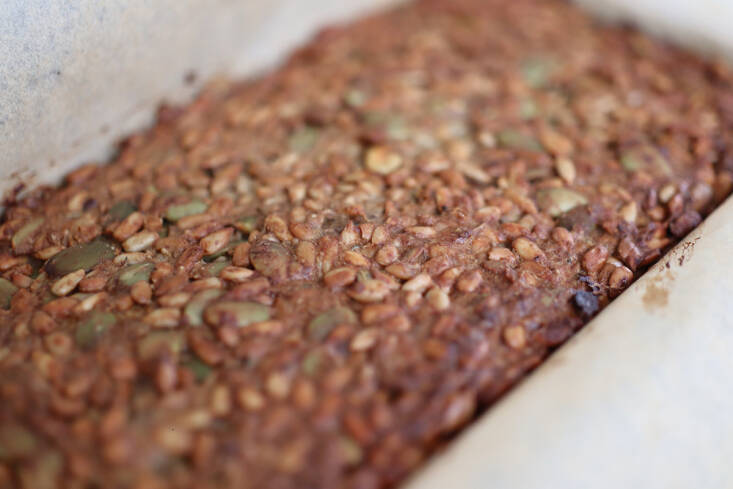 Above: Adding honey or maple syrup will turn the bake loaf golden-brown.
Above: Adding honey or maple syrup will turn the bake loaf golden-brown.
Instead of the gluten from wheat flour, psyllium acts as a binder; it is the seed husk of Plantago species (commonly known as plantain, a lawn “weed”). You can make your own if you have the patience to collect, dry, and grind the seeds, or you can buy psyllium in stores or online. Tahini adds a richness to the bread, and grinding a portion of the toasted seeds adds that sense of flour but without flour. Optional honey or maple syrup helps brown the gluten-free bread as it bakes.
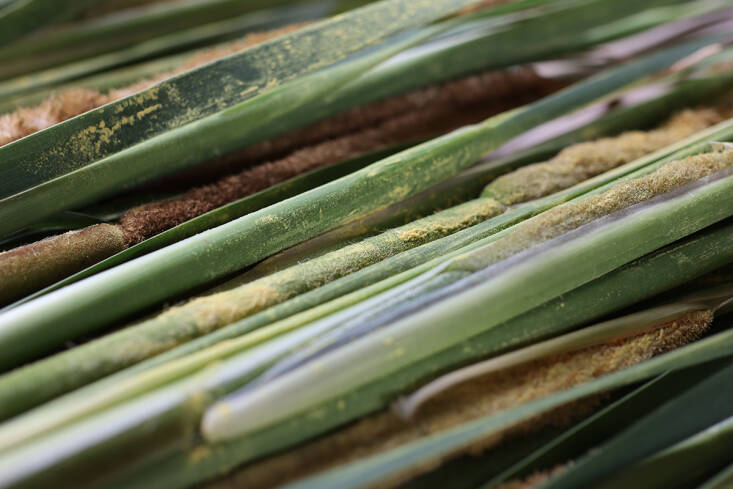 Above: Early summer’s catail pollen adds a roast corn flavor to the bread.
Above: Early summer’s catail pollen adds a roast corn flavor to the bread.
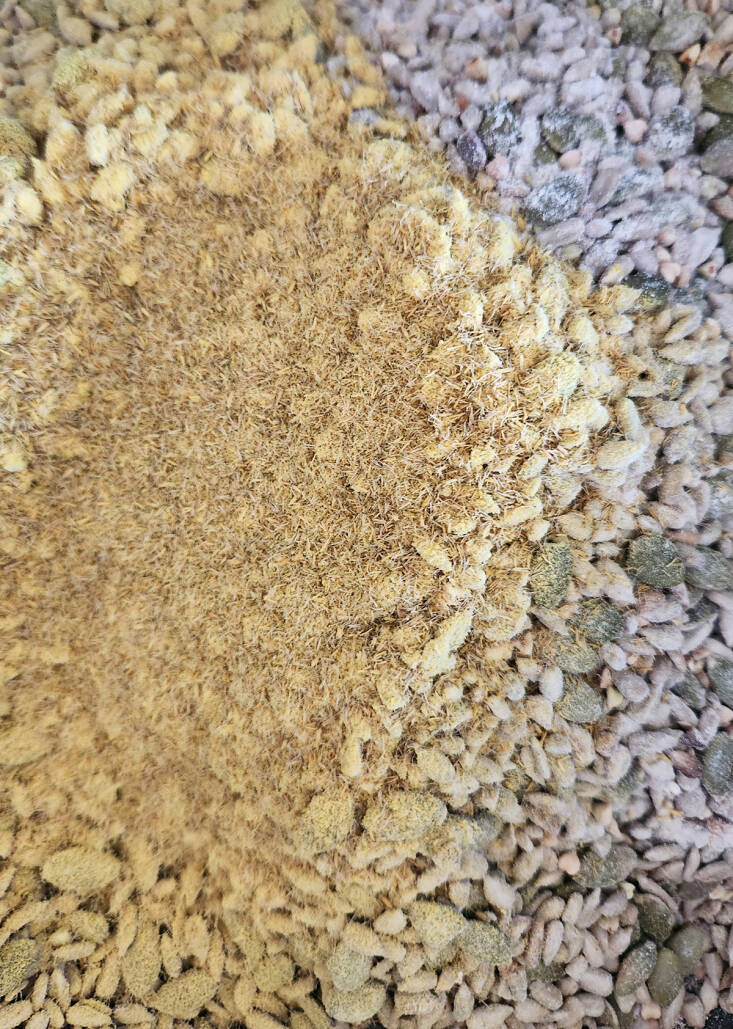 Above: Sifted cattail pollen is toasted along with the seeds.
Above: Sifted cattail pollen is toasted along with the seeds.
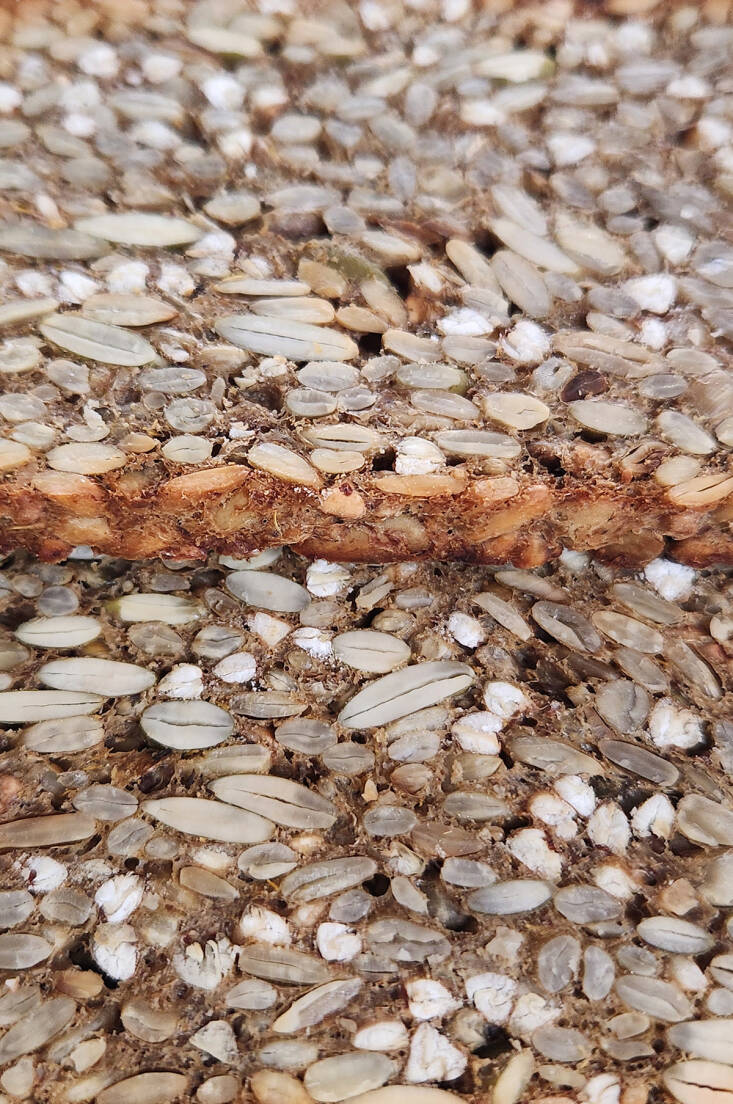 Above: Toasted slices of cattail pollen-flavored seed bread.
Above: Toasted slices of cattail pollen-flavored seed bread.
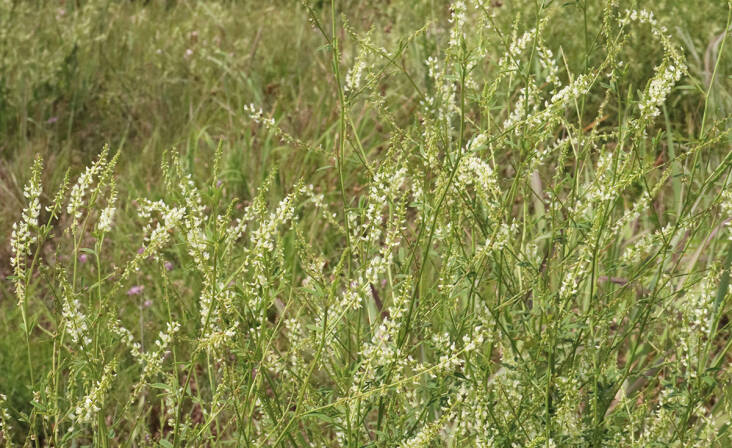 Above: Sweet clover (Melilotis alba) is the herb I use most often to flavor this gluten-free bread. A teaspoon of dried flowers adds a honey-like scent to the loaves.
Above: Sweet clover (Melilotis alba) is the herb I use most often to flavor this gluten-free bread. A teaspoon of dried flowers adds a honey-like scent to the loaves.
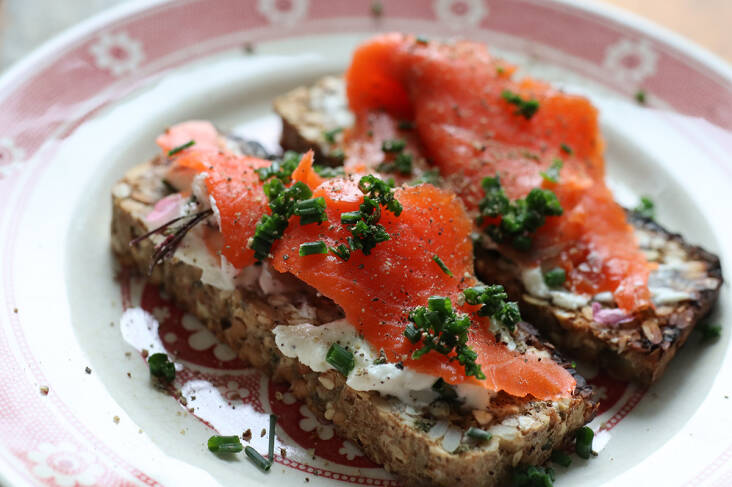 Above: Seed loaves conjure Scandi associations, so smoked salmon is a natural fit, as a topping.
Above: Seed loaves conjure Scandi associations, so smoked salmon is a natural fit, as a topping.
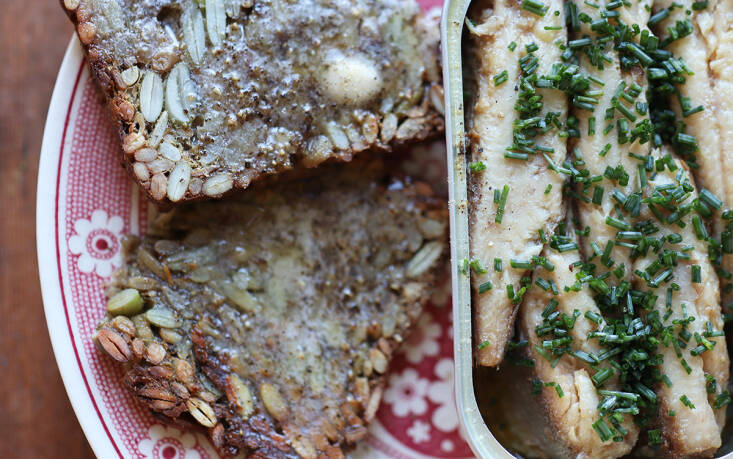 Above: Dress up a can of sardines with toasted seed bread and butter.
Above: Dress up a can of sardines with toasted seed bread and butter.
 Above: Picnic platters of gluten-free bread slices are topped with a beet-inflected bean pâté and fresh cilantro.
Above: Picnic platters of gluten-free bread slices are topped with a beet-inflected bean pâté and fresh cilantro.
 Above: Warm loaves, fresh from the oven.
Above: Warm loaves, fresh from the oven.
 Above: Slice and freeze, for easy toasting.
Above: Slice and freeze, for easy toasting.
Gluten-Free Seed Bread
Makes 1 large or 3 small loaves
Feel free to use a combination* of any seeds: I like these loaves to be heavy on sunflower, both for its flavor and nutritional aspects. As supporting seeds, pumpkin and buckwheat are outstanding. For the three-quarter cup of ground seeds, use buckwheat, sesame, or poppy seed. Each has its own flavor profile. A spice grinder is essential for this part of the recipe.
* Seeds I avoid for this bread include amaranth and flax. The first is too sharp and gritty in this application, and the second has a strong flavor that dominates the others.
- 3 cups raw sunflower seeds
- 1 ¼ cups buckwheat
- 1 cup raw pumpkin seeds
- 1/3 cup poppy seed (or sesame)
- ¼ cup psyllium
- 1 ¼ teaspoons sea salt
- 1 Tablespoon dried sweet clover (Melilotus alba), cattail pollen (optional), or bee balm
- ½ cup tahini
- 2 ½ cups water
- 3 Tablespoons honey or maple syrup
Preheat the oven to 350°F.
Line a loaf pan (9 x 5) with baking parchment, leaving the ends a few inches above the pan sides so you can remove the loaf easily.
Combine all the seeds in a large pan or skillet. Toast them over medium heat until they smell good—about 5 minutes. Stir well several times to make sure the seeds at the bottom don’t scorch.
Measure ½ cup of the toasted seeds and grind them to a powder in a spice grinder. Add this powder to all the toasted seeds in a large mixing bowl. Add the psyllium, the salt, and the wild herbs if using. Stir well.
Mix the tahini with some of the water in a smaller bowl or jug until it is smooth, then add the rest of the water to it gradually. Pour this tahini mixture into the dry ingredients, add the honey or maple syrup, and stir very well. Let this wet mixture sit for a few minutes to thicken, as the psyllium absorbs a lot of moisture.
Spoon the mixture into the lined loaf pan and smooth it evenly, using the back of a wet spoon, until flat. The bread does not rise at all, so you will be filling it all the way to the top.
Slide the pan into the oven and bake for 55 to 60 minutes. The top should be turning pale brown.
Remove from the oven and leave in the loaf pan for a couple of minutes before lifting the loaf free. Cool on a wire rack. When completely cool it is ready to slice.
Toast tip: Because this gluten free bread is is very dense and seed-heavy, it takes longer to toast than bread made from wheat flour. Toast at a lower temperature so that you don’t scorch it, and toast for longer than you usually do.
See also:



